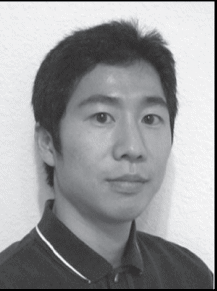|
PRACTICAL
SIGNIFICANCE
During
single-leg
forward
jump-stops,
the
tibialis
anterior
muscle
may not
be a
primary
determinant
for
rearfoot
eversion
and knee
internal
rotation,
and
eventual
increased
anterior
cruciate
ligament
(ACL)
strain.
Alternative
biomechanical
adaptations
may
partially
explain
the
higher
ACL
injury
rates
that
have
been
shown to
accompany
individuals
who tend
to
pronate
excessively.
STUDY
BACKGROUND
Excessive
pronation
is
thought
to lead
to
excessive
knee
internal
rotation
(KIR),
as it
may be
associated
with
excessive
rearfoot
eversion
(EV).
This
link may
possibly
place
more
strain
on the
ACL,
predisposing
the
ligament
to
greater
injury
risk.
The
musculature
surrounding
the
ankle
joint
that
controls
EV may
be
essential
in
controlling
KIR when
the
lower
extremity
is in a
closed
kinetic
chain.
Specifically,
it is
thought
that the
tibialis
anterior
muscle
(TA) may
be most
important
in
controlling
EV,
especially
during
heel-toe
landings
(e.g. a
jump
stop
task).
Therefore,
fatiguing
the TA
muscle
may
provide
greater
insight
into its
potential
influences
on EV
and KIR,
and
ultimately
ACL
injury
risk,
during a
dynamic
activity.
OBJECTIVE
The
primary
purpose
of this
work was
to
examine
the
relationships
between
EV and
KIR when
controlling
for
thigh
muscle
activation
levels.
Secondarily,
this
work
also
sought
to
investigate
the
effects
of TA
fatigue
on EV
and KIR
during
single-leg
forward
jump
stops.
DESIGN
AND
SETTING
A
repeated
measures
design
was used
in the
study
with the
single
within-subjects
factor
being
time
(pre and
post).
This
study
took
place in
the
Applied
Neuromechanics
Research
Laboratory
at UNC
Greensboro.
SUBJECTS
Seventy-two
healthy,
recreationally
active
university
students
(age
23.8 ±
4.0yrs,
height
168.9 ±
14.2cm,
weight
70.9 ±
15.0kg)
participated
in this
study.
MEASUREMENTS
All
subjects
performed
single-leg
forward
jump-stops
before
and
after
the TA
muscle
fatiguing
protocol.
During
the
single-leg
forward
jump
stop
task,
joint
kinematic
and
surface
electromyographic
data of
selected
thigh
musculature
were
obtained.
TA
muscle
fatigue
was
induced
via
dorsiflexion
/
inversion
submaximal
exercise
until
subjects
could no
longer
complete
the
task.
Pre- and
post
root-mean-square
amplitudes
(MVIC%)
of the
vastus
lateralis,
biceps
femoris,
and
semitendinosus
were
obtained
150ms
prior to
foot
contact.
Partial
correlation
coefficients
between
total
KIR
excursion
(KIRexc)
and EV
excursion
at peak
KIR (EVKIRexc)
were
evaluated
while
controlling
for
thigh
muscle
activation.
Additionally,
paired
t-tests
were
used to
compare
KIRexc
and
total EV
excursions
(EVexc)
before
and
after TA
muscle
fatigue.
RESULTS
Partial
correlation
coefficients
between
EVKIRexc
and
KIRexc
were not
significant
either
pre-(r=0.155,
P=0.203)
or
post-TA
muscle
fatigue
(r=0.220,
P=0.069).
No
differences
existed
in EVexc
(t71=-.756,
P=0.452)
or
KIRexc
(t71=1.348,
P=0.182)
following
the
induction
of TA
muscle
fatigue.
CONCLUSIONS
EV was
not
associated
with KIR
during
single-leg
forward
jump-stops.
Moreover,
TA
muscle
fatigue
did not
cause a
change
in EV
and KIR.
In this
heel-to-toe
or
flat-foot
landing,
it does
not
appear
that the
TA
muscle
is a
primary
determinant
of EV.
Furthermore,
theoretical
connections
between
excessive
EV,
increased
KIR, and
ACL
strain
were not
supported.

Figure
1.
Sagittal
Plane
View of
Pulley
System
to
Fatigue
the
Tibialis
Anterior
Muscle

|
Figure
2.
Superior
View of
Pulley
System
to
Fatigue
the
Tibialis
Anterior
Muscle
Publication
and
Presentation
List:
-
Rearfoot
Eversion
and
Tibialis
Anterior
Muscle
Fatigue
Are
Not
Associated
with
Knee
Internal
Rotation
during
a
Single-Leg
Forward
Jump
Stop,
NATA
Annual
Meeting
and
Clinical
Symposium.
2007.
Anaheim,
CA.
|
|

Yohei Shimokochi, PhD, ATC
Principal Investigator
|
|
Yohei Shimokochi, BA degree in Physical Education, MA degree in Education (1999) from Nihon University Japan; B.S. degree in Athletic Training from Minnesota State University, Mankato, and PhD in Exercise and Sport Science (Sport Medicine/Athletic Training Concentration) from the University of North Carolina at Greensboro. Currently, Dr. Shimokochi serves as NIH Postdoctoral Research Associate, University of North Carolina at Greensboro. In September, 2007, he joined the faculty of Osaka University of Health and Sport Science as an Assistant Professor in Department of Health and Sport Management - Athletic Training Course. |
| |
Yohei Shimokochi, PhD, ATC
Osaka University of Health and Sport Sciences
1-1 Asashirodai, Kumatori-cho
Sennan-gun, Osaka, 590-0496
Phone: +81-72-453-8903
Fax: +81-72-453-8818
yshimoko@ouhs.ac.jp |
|
|
This
Grant
Information
Summary
may be
downloaded
in a
2-page
pdf file
from
http://www.natafoundation.org/pdfs/07Shimokochi.pdf. |
Back to
May 6, 2008
eBlast
Newsletter
Send e-mail
to johno@nata.org with questions
or
comments
about this web site. |


